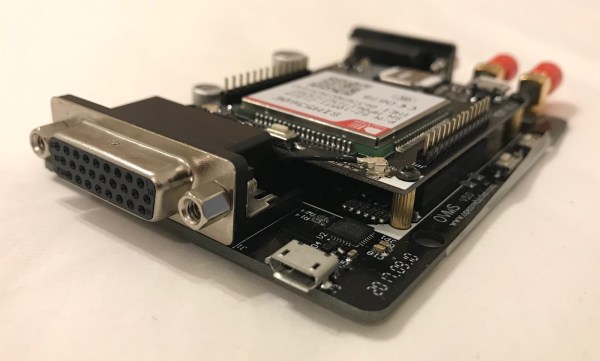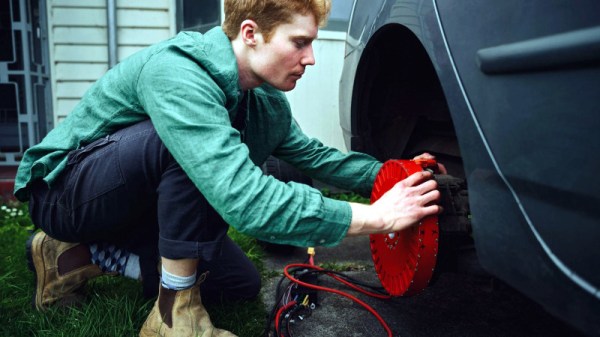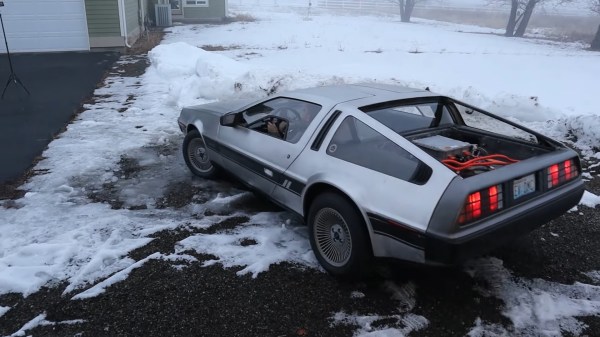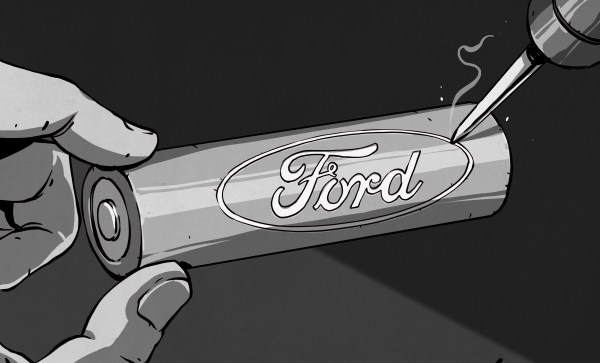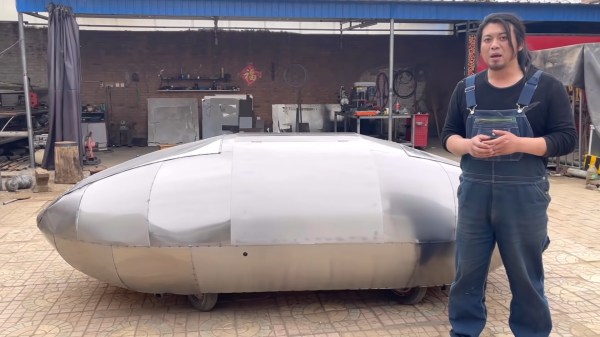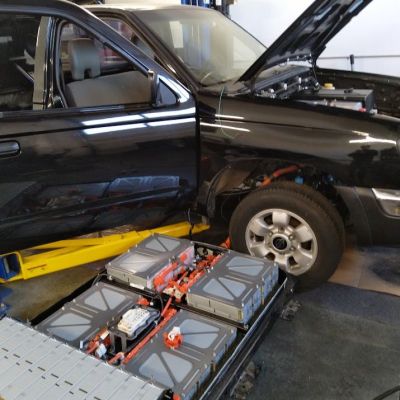
Last year [Jimmy] got a request from a customer ([Dave]) to help convert a 1998 Nissan Frontier pickup into an electric drive vehicle, with a crashed 2019 Nissan Leaf providing the battery and electric motor for the conversion. He has documented the months-long journey with plenty of photos, as well as a series of videos over at the [EVSwap Conversions] YouTube channel. While the idea sounds easy enough, there’s a lot more to it than swapping out the ICE with an electric motor and sticking some batteries to the bottom of the car somewhere with double-sided tape. The pickup truck got effectively stripped down and gutted, before the 110 kW (150 HP) motor got installed using an adapter plate.
The donor Leaf’s battery pack came in at a decently sized 40 kWh, which should give the converted Nissan Frontier BEV a range of easily 100 miles. This pack was split up into two packs, which got put into a custom aluminium battery box, each mounted on one side of the driveshaft. The charging port got installed on the front of the car, next to the logo, discreetly behind a panel. The front of the car had much of the openings that were needed for the ICE’s radiator sealed up for reduced air friction, along with the new low-friction tires that got installed. Although this converted car still has a radiator, it only needs to assisting cooling the motor stack (including inverter and charger) when driving slowly or charging, making it far less demanding and thus allows for a more sleek front.
As a bonus, the car still has the manual 5-gear shift, just without a clutch, and the pickup bed can now also tilt, albeit with hydraulics (so far). Considering that it started with a decent 1998 pickup and totaled Nissan Leaf, this is among the cleanest conversions we have seen, not to mention a good use of a crashed BEV.
Thanks to [JohnU] for the tip.
Continue reading “From Nissan ICE Pickup To BEV With Nissan Leaf Heart”


